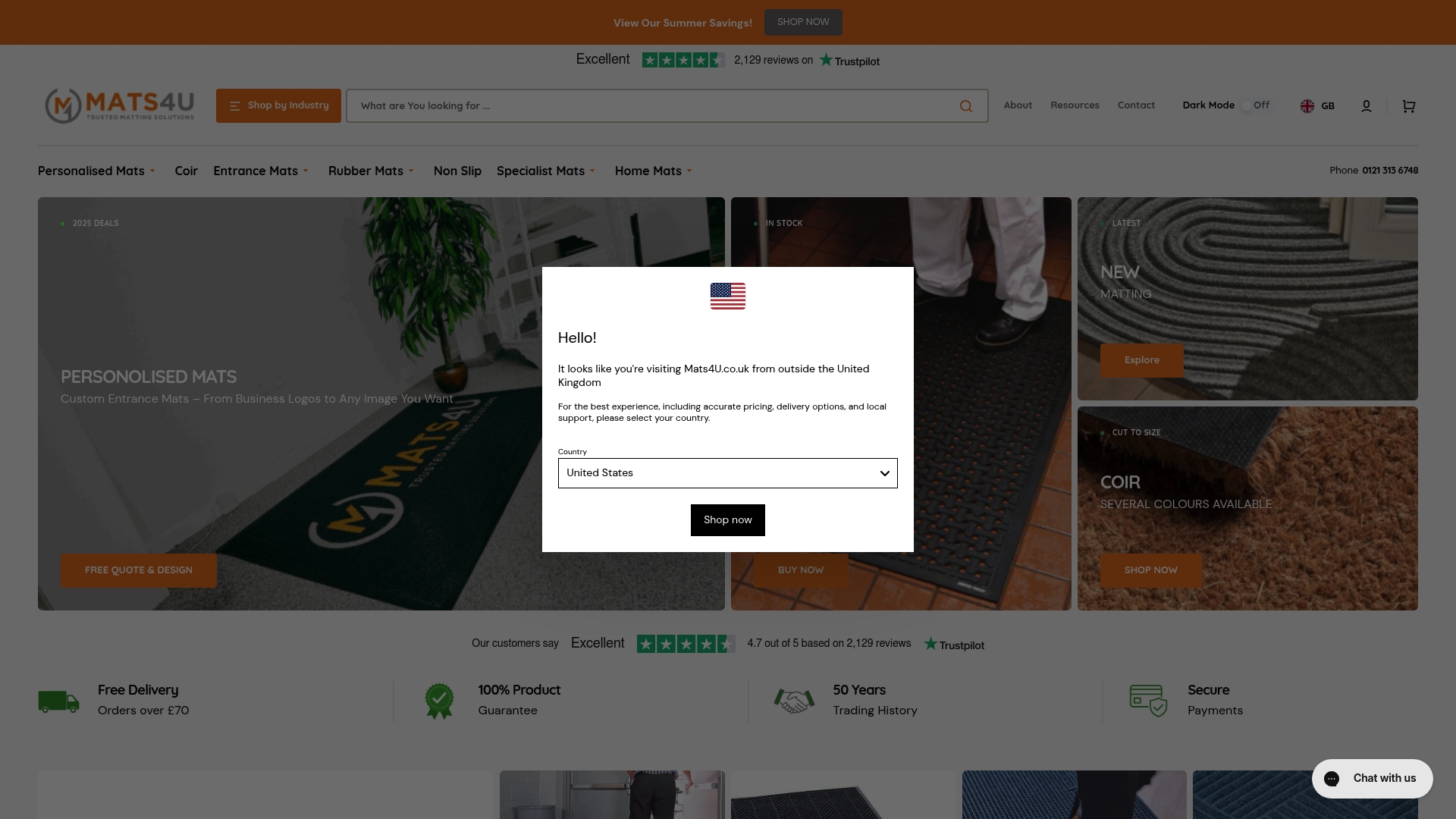Did you know that companies with strong customer experience strategies see up to a 70 percent higher retention rate than their competitors? The pressure to create lasting customer relationships has never been greater, as each interaction shapes your company’s reputation and future growth. Understanding the building blocks of effective customer experience strategies helps businesses move beyond transactions to build real loyalty, stand out in crowded markets, and drive long-term success.
Key Takeaways
| Point | Details |
|---|---|
| Comprehensive Strategy | Effective customer experience strategies must integrate multiple approaches to address both functional and emotional dimensions of engagement. |
| Key Pillars for Success | Focus on integrity, resolution, expectations management, effort minimisation, personalisation, and empathy to enhance customer relationships. |
| B2B Considerations | B2B CX strategies should account for stakeholder mapping and digital integration to strengthen complex organisational interactions. |
| Avoiding Common Pitfalls | Organisations must ensure alignment with broader objectives and avoid fragmented initiatives to maintain a cohesive customer experience framework. |
Table of Contents
- Defining Customer Experience Strategies
- Types of Customer Experience Approaches
- Key Elements of Effective CX Plans
- Implementing Strategies in B2B Environments
- Common Pitfalls and Mistakes to Avoid
Defining Customer Experience Strategies
Customer experience strategy represents a holistic approach businesses use to manage and optimise interactions between their organisation and customers across every touchpoint. Customer experience isn’t just about individual transactions—it’s about creating a comprehensive journey that builds lasting relationships and drives organisational success.
According to KPMG UK, effective customer experience strategies centre around six critical pillars:
- Integrity: Maintaining transparent and honest interactions
- Resolution: Efficiently addressing customer challenges
- Expectations Management: Consistently meeting and surpassing customer expectations
- Minimising Customer Effort: Simplifying processes and interactions
- Personalisation: Tailoring experiences to individual customer needs
- Empathy: Understanding and responding to customer emotions
Successful customer experience strategies require a deep understanding of customer perspectives, systematic measurement of interactions, and continuous improvement. Organisations must invest in training, technology, and cultural shifts that place customer needs at the heart of decision making. By developing a comprehensive approach that integrates these key elements, businesses can transform customer interactions from transactional exchanges into meaningful, loyalty-building experiences that differentiate them in competitive markets.

Here’s a summary comparison of the six core pillars from KPMG, showing how they are addressed throughout customer experience strategies:
| Pillar | Key Focus | Example Practice |
|---|---|---|
| Integrity | Honest, transparent action | Clear communication of policies |
| Resolution | Fast issue resolution | Proactive problem-solving teams |
| Expectations | Managing/surpassing needs | Setting realistic promises |
| Minimising Effort | Simplifying processes | Streamlined online forms |
| Personalisation | Tailored experiences | Customised product recommendations |
| Empathy | Understanding emotions | Staff training on active listening |
Types of Customer Experience Approaches
Customer experience approaches are strategic frameworks that organisations develop to systematically improve interactions and build meaningful relationships with their customers. Customer experience design is not a one-size-fits-all methodology but rather a nuanced strategy tailored to specific business contexts and customer expectations.
According to KPMG UK, effective customer experience approaches typically encompass multiple strategic dimensions:
- Trust-Building Approach: Focused on establishing organisational integrity and transparency
- Problem-Resolution Approach: Prioritising efficient and empathetic issue management
- Expectation Management Approach: Creating consistent and predictable customer interactions
- Effort Minimisation Approach: Streamlining processes to reduce customer friction
- Personalisation Approach: Crafting individualised experiences that feel unique and responsive
- Emotional Connection Approach: Developing deeper, more meaningful customer relationships
Successful customer experience strategies require businesses to blend these approaches dynamically. Rather than treating them as isolated tactics, organisations must integrate these approaches into a cohesive framework that adapts to evolving customer needs. By understanding and implementing a multifaceted approach, businesses can create more engaging, responsive, and loyalty-inducing customer experiences that differentiate them in competitive markets.
Key Elements of Effective CX Plans
Designing a comprehensive customer experience (CX) plan requires strategic integration of multiple critical elements that transform customer interactions from transactional exchanges into meaningful relationships. Strategic CX planning goes beyond simple customer service—it demands a holistic approach that addresses both functional and emotional dimensions of customer engagement.
According to KPMG UK, effective CX plans should incorporate six fundamental elements:
- Organisational Integrity: Building trust through transparent and consistent interactions
- Problem Resolution: Developing efficient and empathetic issue management processes
- Expectation Management: Consistently meeting and surpassing customer expectations
- Effort Reduction: Simplifying customer journeys and minimising friction points
- Personalisation: Creating tailored experiences that feel individually crafted
- Emotional Intelligence: Understanding and responding to customer emotional states
Furthermore, research from UK business insights highlights additional contemporary considerations for modern CX strategies. These include embracing digital transformation, implementing omnichannel consistency, leveraging intelligent customer support technologies that blend chatbots with human agents, and developing agile feedback mechanisms that enable continuous improvement. By synthesising these technical and human-centric approaches, organisations can create adaptive CX plans that not only meet but anticipate customer needs in an increasingly complex and dynamic marketplace.
![]()
Implementing Strategies in B2B Environments
B2B customer experience strategies require a fundamentally different approach compared to consumer-focused models, recognising the complex ecosystem of corporate decision-making and stakeholder interactions. B2B customer experience is not about targeting individual consumers, but about understanding and addressing the intricate needs of entire organisational units and their multiple decision-makers.
According to Qualtrics, successful B2B CX implementation demands a comprehensive strategy that encompasses:
- Stakeholder Mapping: Identifying and engaging multiple decision-makers within client organisations
- Digital Channel Integration: Creating seamless interactions across marketing, sales, and post-sale touchpoints
- Effort Minimisation: Streamlining processes to reduce complexity for business clients
- Outcome-Driven Approach: Directly linking customer experience performance to business retention and growth metrics
Furthermore, research from industry experts highlights critical best practices for B2B customer experience strategies. These include leveraging real-time customer data, developing detailed buyer personas, implementing personalised communication strategies, offering flexible pricing tiers, embracing AI and automation technologies, and providing robust post-purchase support. By adopting a holistic, data-driven approach that prioritises understanding and anticipating client needs, organisations can transform B2B interactions from transactional exchanges into strategic, long-term partnerships that drive mutual business success.
Common Pitfalls and Mistakes to Avoid
Customer experience strategies can quickly unravel when organisations fail to understand the nuanced landscape of customer expectations and organisational capabilities. Strategic customer experience requires more than good intentions—it demands a comprehensive, holistic approach that anticipates and mitigates potential implementation challenges.
According to McKinsey, businesses frequently encounter critical strategic errors in their customer experience initiatives:
- Strategic Misalignment: Failing to connect CX efforts with broader organisational objectives
- Initiative Fragmentation: Dispersing resources across disconnected improvement projects
- Touchpoint Myopia: Focusing on isolated interactions instead of end-to-end customer journeys
- Solution Rigidity: Lacking creative approaches to addressing customer needs
Research from technology consulting experts further illuminates additional pitfalls that can undermine customer experience strategies. These include establishing unclear objectives, neglecting audience segmentation, over-relying on technological solutions without maintaining human connection, inconsistent omnichannel experiences, setting unrealistic customer expectations, and failing to establish meaningful key performance indicators. By proactively identifying and addressing these potential mistakes, organisations can develop more robust, adaptive customer experience strategies that genuinely resonate with their target audiences and drive sustainable business growth.
Transform Every Customer Touchpoint With Custom Mats That Show You Care
Delivering a memorable customer experience is not just about digital journeys or quick responses. The physical spaces your customers enter are a vital part of their journey and can either reinforce or undermine your efforts in integrity, personalisation, and empathy. As highlighted in our guide, small oversights such as messy entrances or unsafe walkways can negatively shape customer perceptions, erode trust, and make your carefully planned strategies fall flat.
Imagine the reassurance of a pristine, branded, slip-resistant mat welcoming every visitor. With Mats4U’s custom mat solutions, you can create safe, inviting environments that support the six pillars of excellent customer experience described in this article. Whether you need a bespoke entrance mat for your retail space, anti-slip safety in hospitals, or unique branding for your next promotion, our made-to-measure options minimise customer effort and build confidence from the first step.

Act now to turn first impressions into lasting loyalty. Explore how Mats4U can help you personalise your physical touchpoints for lasting impact. Visit our site today and discover the practical changes you can make to boost trust and satisfaction with every visitor.
Frequently Asked Questions
What is a customer experience strategy?
A customer experience strategy is a holistic approach that businesses use to manage and optimize all interactions with customers, focusing on creating a comprehensive journey that fosters long-lasting relationships and drives success.
What are the key pillars of effective customer experience strategies?
Effective customer experience strategies revolve around six core pillars: Integrity, Resolution, Expectations Management, Minimizing Customer Effort, Personalisation, and Empathy.
How can businesses implement customer experience strategies in B2B environments?
In B2B contexts, businesses can implement customer experience strategies by mapping stakeholders, integrating digital channels, minimizing effort for clients, and adopting an outcome-driven approach that links experience to retention and growth metrics.
What common mistakes should businesses avoid in their customer experience initiatives?
Common pitfalls in customer experience initiatives include strategic misalignment, initiative fragmentation, touchpoint myopia, solution rigidity, and establishing unclear objectives. Addressing these issues can strengthen customer experience strategies.
Recommended
- Understanding Corporate Social Responsibility: A Comprehensive Guide – Mats4U
- Understanding Corporate Social Responsibility Trends – Mats4U
- 7 Community Engagement Ideas for Business Success – Mats4U
- 7 Effective Ways to Boost Staff Morale – Mats4U
- Instore Experience Design - Corrado Manenti
- 7 Apps to Help Improve your Customers Experience in 2023









